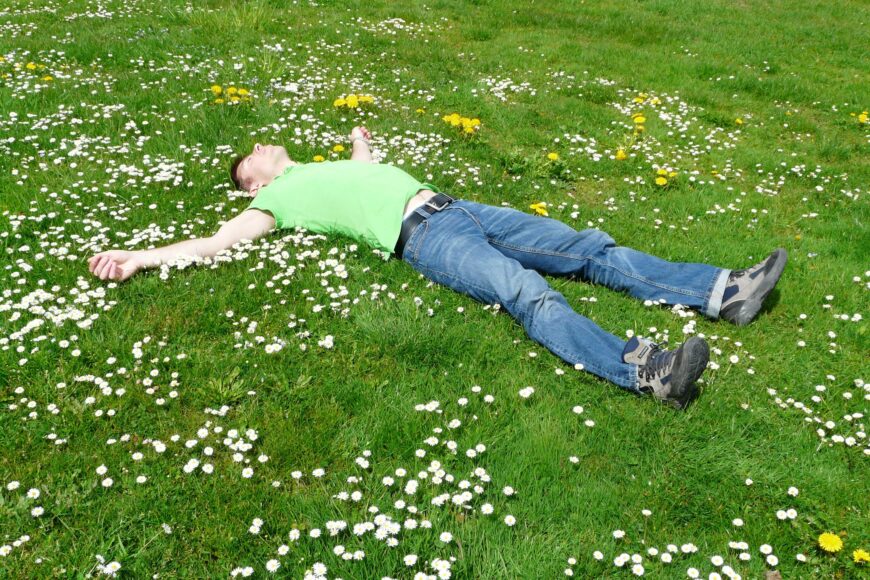An Introduction to Grounding
Grounding is a powerful tool for calming the nervous system because it helps bring your body and mind back to the present moment. When you place your bare feet on the ground or engage in other grounding practices, you activate sensory receptors in your skin that send signals to your brain and nervous system, reinforcing a sense of safety.
Any act of grounding connects you to the earth’s natural electrical charge, which some studies suggest can reduce inflammation and regulate the autonomic nervous system. By engaging with the physical world in this way, grounding interrupts the cycle of fight, flight, freeze, or fawn responses, shifting the body out of a state of hyper-arousal or shut-down into one of greater balance and ease.
The Science and History of Grounding
Grounding, which is also known as Earthing, is an ancient practice that has been used intuitively by cultures around the world. From the barefoot walking traditions of indigenous peoples to yogic practices that emphasize connection to the Earth, grounding has always played a role in well-being.
In modern science, the concept of grounding gained recognition through research on bioelectrical healing, particularly in studies by Clint Ober, who pioneered the theory that direct contact with the Earth’s surface can reduce inflammation and improve health. His work, along with research in electrophysiology and nervous system regulation, suggests that grounding influences the body’s electrical charge, helping to stabilise biological rhythms and support immune function.
Practical Grounding Techniques to Help You begin
I recommend using grounding practices as one of the first ways to ease into self-regulation.
Here are some practices to begin with. Choose one to try:
- Place your hands on your heart and breathe towards your heart. This is to reconnect your heart-centre with your body and mind.
- Feel your feet on the ground; push your toes into the surface underneath you. Imagine the Earth is reaching up to support you and hold you.
- Touch a textured surface nearby, allow your skin to notice the sensations.
Grounding can help you come to the present moment when things feel overwhelming. You may feel your nervous system begin to settle.
The Nervous System Perspective
Grounding stimulates the parasympathetic branch of the autonomic nervous system, which is often referred to as the “rest and digest” mode. This part of the nervous system counteracts the stress response, lowering cortisol levels and reducing heart rate.
Grounding techniques, like those above, offer a direct way to re-establish a more regulated nervous system state.
By focusing on tactile sensations and connecting to the earth, grounding helps you release stored stress and return to a state of regulation, making this an accessible and highly effective tool for anyone managing stress or nervous system dysregulation, and certainly for everyone with a chronic condition.
It's not that you live in nature or you are someone who loves nature. It's that you are nature.
Integrating Grounding into Your Healing Journey
Grounding is more than just another technique — it is a way of re-establishing your place in the world, physically, mentally and energetically. No matter your current window of tolerance, I hope you can make contact in some small way today with something of this earth.
By integrating grounding into your life, you create a foundation of balance, presence, and resilience. Whether you’re seeking relief from stress, pain, or emotional overwhelm, this simple practice has profound benefits.





With warmth and care,
Amari













